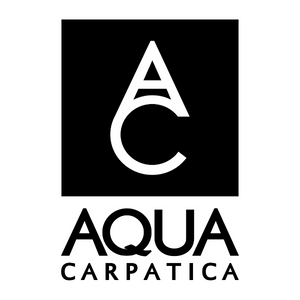The grapes for the Orange Wine Rubicone IGT Bianco come from two of Poderi dal Nespoli’s historic vineyards: Dogheria for Pinot Bianco and Mastalsò for Trebbiano.

“Orange Wine is a project that holds a special place in my heart,” according to winemaker Soledad Adriasola (main photo). “It’s our first and only orange wine that came to life unexpectedly. During the 2020 harvest, a technical glitch disrupted our plans for the Pinot Bianco grapes’ pre-fermentative cryomaceration, leaving us unable to control the temperatures. In a bold move to salvage the fruit, we decided to proceed with fermentation while maintaining skin contact, a process we repeated separately for the Trebbiano grapes.
“The outcome of this impromptu experiment was nothing short of remarkable: a wine that captures the aromatic intensity of a macerated white, yet retains the elegance, cleanliness, and varietal purity characteristic of our wines. Trebbiano’s body and structure seamlessly intertwine with Pinot Bianco’s acidity and fruity aromas, heightened by a 3% component of grapes subjected to appassimento. From that moment on, this serendipitous wine has become a favourite among our team and customers alike.”
After destemming and crushing, fermentation with the skins and maceration lasts for 30 days. Then, the skins are gently pressed. The wine is then matured on fine lees for at least three months.
‘It marks a significant step forward’
Zaccagnini adds riserva to its Tralcetto line

At the heart of Zaccagnini’s portfolio lies Tralcetto, a collection of wines adorned with a vine shoot tied by hand around the bottle neck. It symbolises the Abruzzo winery’s deep-rooted commitment to quality and craftsmanship.
Traditionally, the lineup comprises six wines – including Montepulciano d’Abruzzo, Trebbiano d’Abruzzo, Cerasuolo d’Abruzzo and Pecorino – but there’s a new addition this year: a Montepulciano d’Abruzzo Riserva.
“Tralcetto Montepulciano d’Abruzzo Riserva embodies our commitment to revitalise this distinctive Zaccagnini line,” states Giacomo Tarquini, marketing director of the Argea Group. “With this new release, we stay true to the line’s stylistic signature while presenting one of the most exceptional interpretations of the DOC. It marks a significant step forward in both quality and positioning within a collection that has been bringing Abruzzo’s wine to tables around the globe for 40 years.”

The wine is made from Montepulciano grapes cultivated in the vineyards of Bolognano, near the winery (above). These plots represent the company’s earliest plantings.
Estate winemaker Federica Lauterio says: “The vinification process behind Tralcetto Montepulciano d’Abruzzo Riserva reflects our winemaking philosophy, focusing on producing wines renowned for their delightful flavour, impeccable balance and authentic expression of varietal characteristics.”
After the harvest, meticulously selected grapes are transported to the cellar for gentle pressing. Fermentation with skin maceration commences, lasting for a minimum of 20 days. Then the wine is racked to barriques for at least 18 months of ageing before undergoing an additional six months of bottle ageing.
Celebrating Barbera

The Barbera grape, a cornerstone of winemaking in Piedmont, has shown remarkable resilience to climate variations, particularly among its older vines.
And the new wine from Piedmont brand Michele Chiarlo – a champion of Barbera – shows the type of quality it can achieve in the region.
The Nizza DOCG Montemareto 2021 has been released ahead of the denomination’s tenth anniversary. The brothers who now run Michele Chiarlo have also been talking about the AGEBA project. Led by the Consorzio Barbera d’Asti e Vini del Monferrato, this initiative focuses on identifying and studying old vines with robust genetic resilience, which offer promising prospects for the future of viticulture in the region.
“The AGEBA project is a fascinating study that delves into old vines with the most resilient genetic heritage. While examining vineyards, we select samples deemed healthy, free from viruses or Flavescence dorée, and proven to withstand 80-90 years of various climatic conditions, from hot and cold to dry seasons, or even capable of producing lower alcohol content,” states Stefano Chiarlo, winemaker and co-owner with his brother Alberto.
“By analysing the genetic makeup of each old vine, the project aims to pinpoint the specimens most resilient to climate change or new diseases, providing material that can be shared with nurseries for future replanting. We began with Barbera because it’s an area that has been widely affected by climate change and prone to issues like Flavescence dorée. However, it would also be interesting to expand this research to Nebbiolo in the future, as it’s always intriguing to delve into the history of old vines. Additionally, this study has unearthed several other intriguing discoveries, such as the rediscovery of abandoned rootstocks from wetter and colder decades, which didn’t perform well back then but could be useful now.”

Stefano was speaking ahead of the launch of the Nizza DOCG Montemareto 2021, a Barbera varietal which comes from grapes handpicked in this majestic hill (above).
Fermentation is in stainless-steel tanks, with 10-12 days of maceration and soft pumping over. After MLF, the wine is racked to large oak barrels for a year.

 English
English French
French



.png)


.png)





